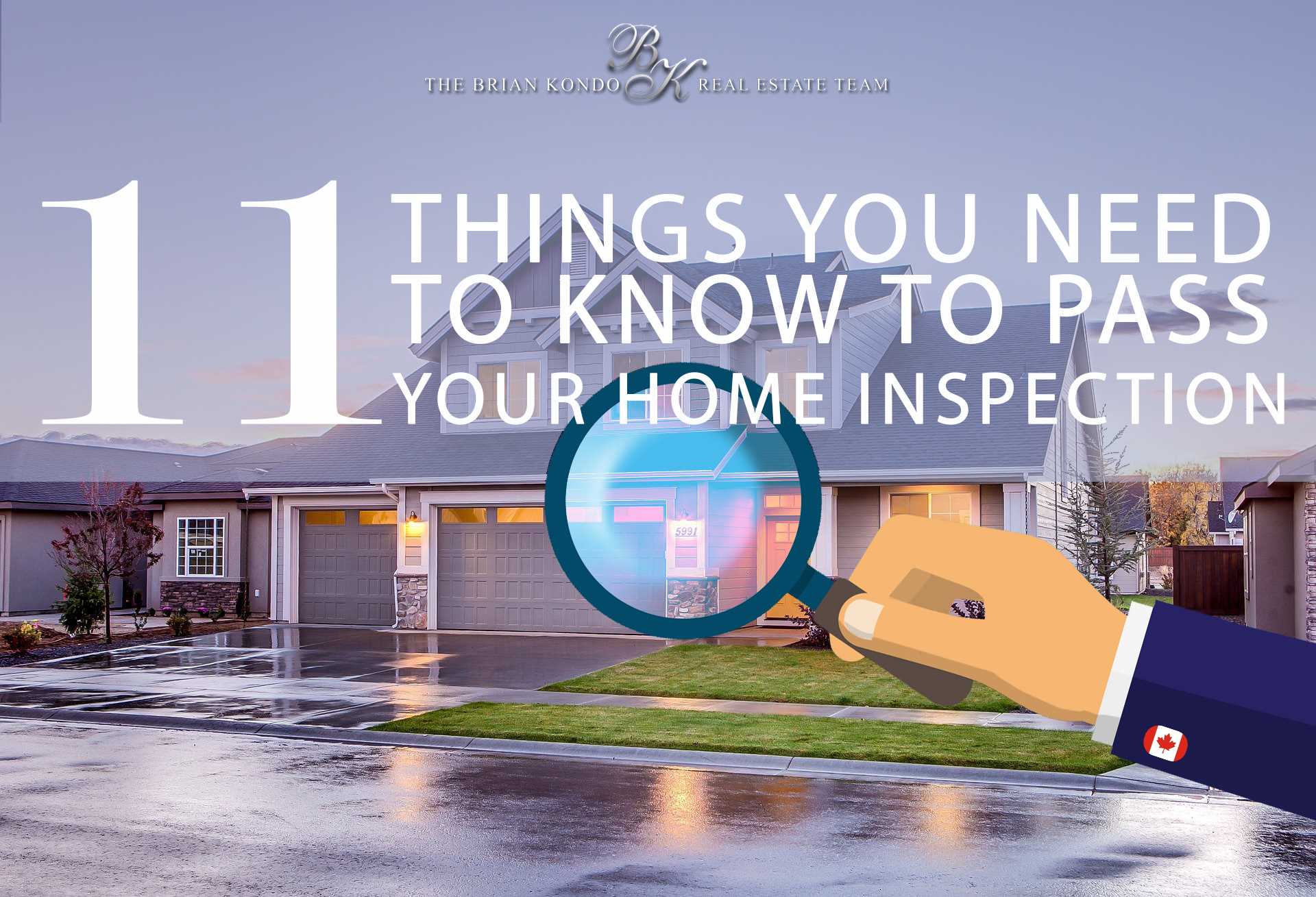How to Pass your Home Inspection
Monday, September 27, 2021

When you put your home on the market, you don’t want any unpleasant surprises that could cost you the sale of your home. Although homebuyers are as unique as the homes they plan to buy – one quality they share is a desire, to ensure that the home they call their own is as good beneath the surface as it appears to be. Some would ask – Will the roof end up leaking? Is the wiring secure for you? What’s with the plumbing? These, among others, are the questions that buyers are going to ask for professional support to answer.
In most cases, you can make a fair pre-inspection by yourself if you know what you’re looking for. And knowing what you’re searching for will help you avoid a little bit of trouble growing into expensive and problematic ones. We’ve identified the 11 most common of these so take your notes and brace yourselves!
Number one, defective plumbing.
Defective plumbing can manifest itself in two ways: leaking and clogging. If you hear the sound of running water, this means that the pipes are undersized. If the water looks dirty when the tap is first turned on, this is a clear sign that the pipes are rusting, which may contribute to serious water quality issues.
Number two, Damp or Wet Basement.
An inspector will search your walls for a powdery white mineral layer a few inches off the floor, and look to see if you feel safe enough to store items right on your basement floor. A mildew odor is almost difficult to remove, and the inspector is sure to be aware of it. It could cost you $200-$1,000 to repair a crack in or around your basement foundation, depending on the size and location of the crack. Adding a sump pump and pit could cost you about $750-$1,000, and full waterproofing, for an average of 3 bedrooms at home, could be $5,000-$15,000. You’re going to have to consider these figures in the estimation of what price you want to pay on your house.
Number three, Inadequate Wiring & Electrical.
Your home should have a minimum of 100 amp operation, and this should be clearly stated. The wire should be supposed to be copper or aluminum. Home inspectors will see octopus plugs as evidence of defective connections and a possible fire hazard.
Number four, Poor Heating & Cooling Systems.
Insufficient insulation and insufficient or improperly working heating systems are the most common causes of poor heating. While a properly clean furnace, without rust on the heat exchanger, typically has life left in it, the inspector will inquire and check to see if your furnace has a normal life span of 15-25 years. For a forced air gas device, the heat exchanger will be subject to special scrutiny because a broken heat exchanger will emit deadly carbon monoxide to the house. These heat exchangers must be replaced if they are damaged, they can not be fixed.
Number five, Roofing Problems.
Water leakage through the roof can occur for a number of causes, such as physical corrosion of the asphalt shingles, curling or curling, splitting, or mechanical damage caused by a windstorm. When gutters leak and downspouts cause water to flow down and through the outer walls, this external issue becomes a big internal one.
Number six, Damp Attic Spaces.
Apart from basement dampness, issues with ventilation, insulation, and vapor barriers can cause dust, moisture, mold, and mildew to form in the attic. This can lead to premature wear of roofs, buildings, and construction materials. The cost of repairing this damage could easily reach $2,500.
Number seven, Rotting Wood.
This can occur in many places like doors or window frames, trim, siding, decks and fences. Often a building inspector may examine the wood to see if it is present-especially when the wood has been freshly painted.
Number eight, masonry work.
Rebricking can be expensive, however, left unattended, such repairs can cause issues with water and moisture infiltration into the building, which may lead to a chimney being clogged by falling bricks or even a chimney falling on the roof. It may be expensive to repair a chimney or to have it changed.
Number nine, Unsafe or Overfused Electrical Circuit.
A fire hazard is created when more amperage is drawn on the circuit than was intended. The 15-amp circuits are the most common in a typical household, with larger service for large appliances such as stoves and dryers. It will cost you a few hundred dollars to replace your fuse panel with a circuit panel.
Number ten, Adequate Security Features.
Other than a purchased security device, an inspector can search for simple safety features to secure your house, such as proper locks on windows and patio doors, dead door bolts, smoke, and even carbon monoxide detectors in every bedroom and on every floor. And if the price varies, these components will add to the costs. You can consult with your local experts before buying or installing.
And last on the list, Structural/Foundation Problems.
The inspector will investigate the structure and structure of your house, as the structural integrity of your house, is important. When you put your home on the market, you don’t want any unwanted surprises that might have cost you the selling of your house. So that’s it for the list of things you need to know to pass your home inspection!
By knowing these 11 problem areas as you walk into your house, you will be protecting yourself against potential disappointment.
| Stay Connected“, “Follow Us | |||




